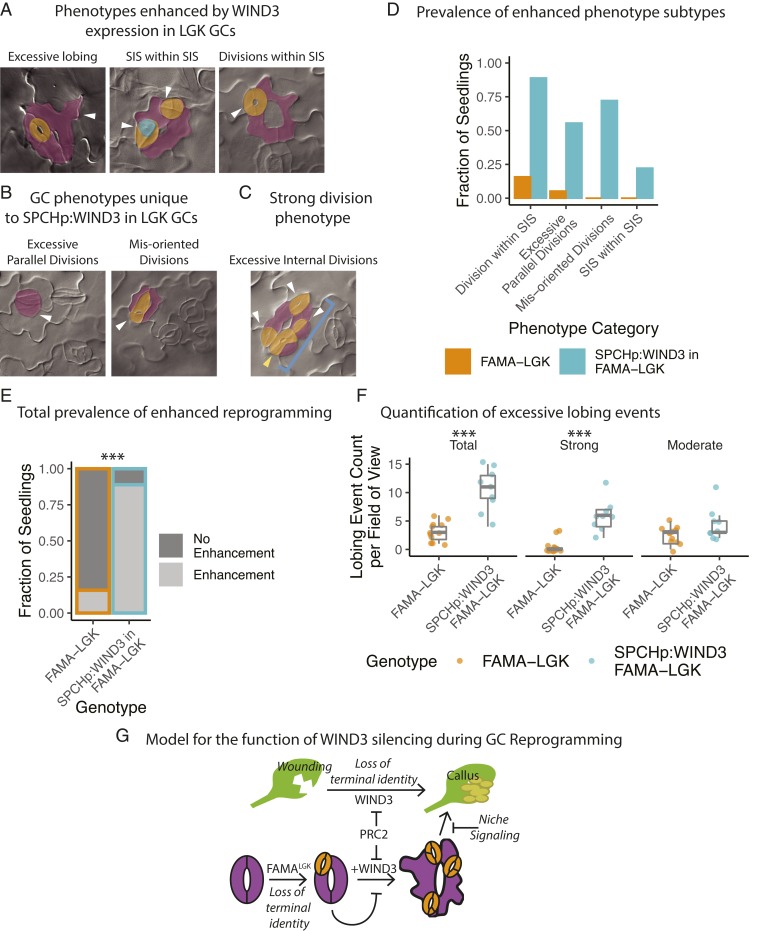Fig. 5.
Reestablishing WIND3 expression in LGK GCs enhances the reprogramming phenotype relative to FAMALGK, suggesting plant cells sense and resist inappropriate reprogramming. (A and B) Representative DIC images of the different manifestations of the enhanced LGK phenotype (A) and the novel phenotypes (B) caused by SPCHp:WIND3 expression in FAMALGK GCs in 12 dpg cotyledons. White arrowheads denote instances of the referenced phenotype. SIS are false-colored in orange. Meristemoids in stomata are false-colored in green. Original stomatal complexes are false-colored in purple. (C) Image of excessive stomatal complex divisions. Here, white arrowheads indicate SIS, the yellow arrowhead indicates a division within an SIS, and the blue bracket points out the entire original complex. (D) Quantification of the prevalence of each class of enhanced phenotype among seedlings of the parental FAMALGK line (n = 19), and a T2 line expressing SPCHp:WIND3 in FAMALGK (n = 18). Values represent the number of seedlings having 1 or more instance of each enhanced phenotype. (E) Overall prevalence of phenotype enhancement per seedling. The total number of seedlings with enhanced phenotypes in each population are statistically different by Fisher’s exact test, P = 1.006e-05. (F) Quantification of GC lobing events per field of view (384 µm × 486 µm) in DIC images of 12 dpg cotyledons in the same lines used in 5A. There is a statistically significant increase in the total number of lobing events (P = 0.0002687) and the number of strong lobing events (P = 0.000256) in the line expressing SPCHp:WIND3 in FAMALGK by Welch’s t test. (G) Failure to silence WIND3 in LGK GCs causes reprogramming enhancement via increasing the number of cell divisions and the extent of dedifferentiation, which are also processes involved in callus formation. PRC2 regulates WIND3, limiting the extent of reprogramming. Asterisks indicates statistically significant P value, less than 0.0001.

